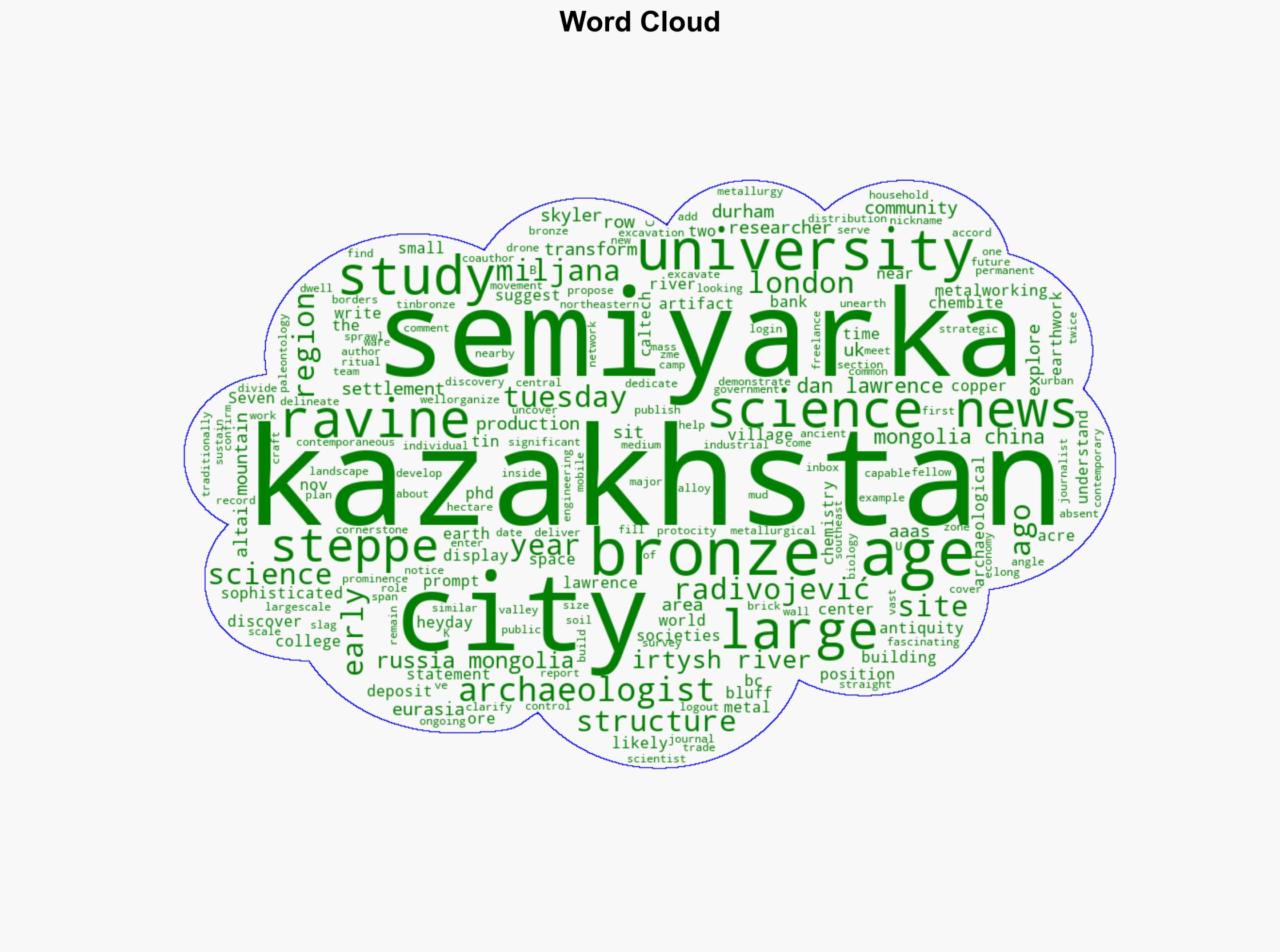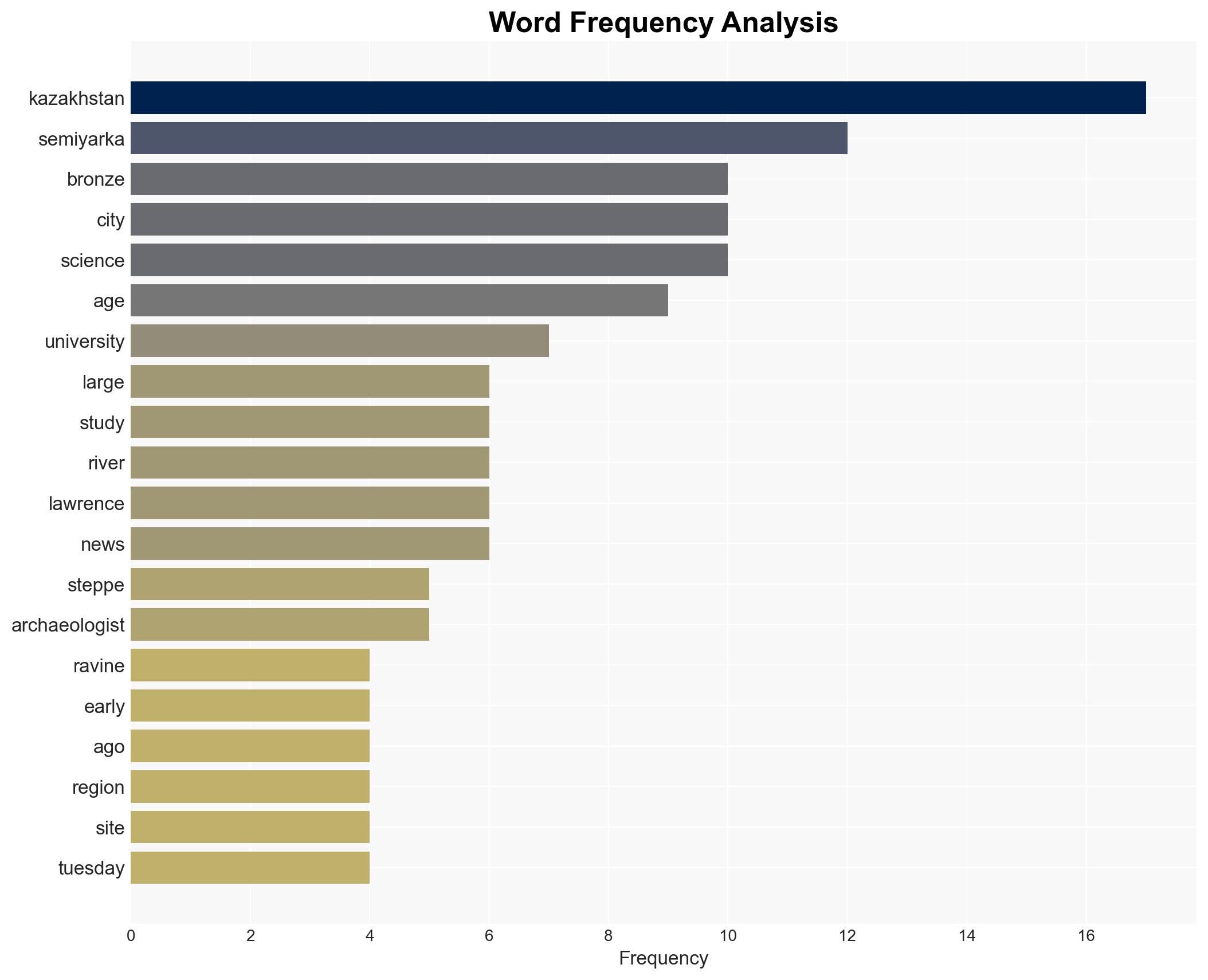‘Sophisticated’ Bronze Age city unearthed in Kazakhstan ‘transforms our understanding of steppe societies’ – Live Science
Published on: 2025-11-18
AI-powered OSINT brief from verified open sources. Automated NLP signal extraction with human verification. See our Methodology and Why WorldWideWatchers.
Intelligence Report:
1. BLUF (Bottom Line Up Front)
The discovery of the Bronze Age city Semiyarka in Kazakhstan suggests a significant shift in understanding the complexity and organization of steppe societies. The most supported hypothesis is that Semiyarka served as a major trade and metallurgical center, indicating a higher level of socio-economic development than previously assumed. Confidence Level: Moderate. Recommended action includes further archaeological and interdisciplinary research to confirm the city’s role and implications for regional history.
2. Competing Hypotheses
Hypothesis 1: Semiyarka was a major trade and metallurgical center, indicating advanced socio-economic structures in steppe societies.
Hypothesis 2: Semiyarka was primarily a ceremonial or ritual site with limited economic significance, with its metallurgical evidence being secondary or symbolic.
Hypothesis 1 is more likely due to the extensive evidence of metalworking and strategic location near metal deposits and trade routes. Hypothesis 2 lacks supporting evidence given the scale of industrial activity observed.
3. Key Assumptions and Red Flags
Assumptions: The interpretation of the site’s function is based on current archaeological evidence, which may be incomplete. The strategic location is assumed to be advantageous for trade without considering potential geopolitical barriers.
Red Flags: Potential bias in interpreting the site as a city rather than a complex settlement. The possibility of overestimating the site’s influence based on limited excavation data.
4. Implications and Strategic Risks
The discovery challenges existing narratives about steppe societies, potentially altering historical and cultural perceptions. This could lead to increased academic interest and funding for Central Asian archaeology. However, it may also provoke nationalistic narratives or territorial claims based on historical interpretations, posing political risks.
5. Recommendations and Outlook
- Actionable Steps: Encourage interdisciplinary research combining archaeology, metallurgy, and historical analysis to validate findings. Promote regional cooperation in archaeological efforts to prevent politicization.
- Best Scenario: Semiyarka is confirmed as a major trade hub, enhancing understanding of Bronze Age economies and fostering regional cooperation in heritage preservation.
- Worst Scenario: Misinterpretation of findings leads to political tensions or exploitation of the site without proper preservation.
- Most-likely Scenario: Continued research refines understanding of Semiyarka’s role, contributing to a nuanced view of steppe societies.
6. Key Individuals and Entities
Miljana Radivojević, University College London; Dan Lawrence, Durham University.
7. Thematic Tags
Regional Focus, Central Asia, Archaeology, Bronze Age, Steppe Societies, Metallurgy, Trade Networks
Structured Analytic Techniques Applied
- Causal Layered Analysis (CLA): Analyze events across surface happenings, systems, worldviews, and myths.
- Cross-Impact Simulation: Model ripple effects across neighboring states, conflicts, or economic dependencies.
- Scenario Generation: Explore divergent futures under varying assumptions to identify plausible paths.
- Network Influence Mapping: Map influence relationships to assess actor impact.
Explore more:
Regional Focus Briefs ·
Daily Summary ·
Support us
·





